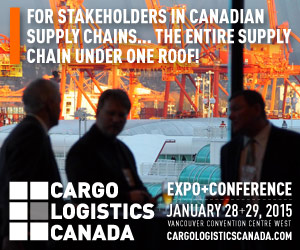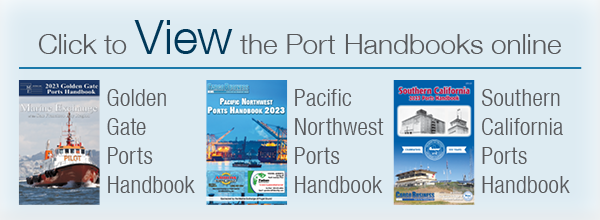|
By William DiBenedetto, CBN Features Editor
With labor-related congestion and cargo backups on the West Coast likely to drag on until well past the Lunar New Year in Asia, ports in other regions may have a golden opportunity to grab significant market share at the expense of the West Coast.
The stakes are high for both coasts. U.S. East and Gulf coast ports are poised for a prosperous year due to the disruptions in the West and, perhaps equally important, the nation’s solid economic growth. The rising economic tide that’s supposed to lift all boats may have to wait for a while on the West Coast.
Although nothing is guaranteed, the cargo flow pendulum could swing back to the East and Gulf coasts, helped by a southward shift in Asian manufacturing, the pending completion of the Panama Canal expansion and by continuing questions about the reliability of West Coast ports, according to news reports.
The Global Port Tracker published by Hackett Associates and the U.S. National Retail Federation recently forecast that container volume through major gateways for retail imports would increase 4.6 percent on the East Coast and 3.2 percent on the West Coast during the first half of 2015. But there are variables to consider: on the East Coast there’s the possibility of a repeat of severe weather conditions, while on the West Coast the length and magnitude of the labor situation is a big wildcard.
No ports are exempt from the congestion bug: nationwide they are struggling with congestion because of increasing trade, the impact of the new generation of huge containerships and a shortage of chassis.
"There is generally a strong need for upgraded infrastructure in many parts of the world," said Kim Fejfer, CEO of Maersk's APM Terminals, in a recent Shipping Watch interview. Containerships keep getting larger: "The biggest ships of up to 20,000 TEUs will be deployed on the key trades from Asia to Europe. The ships that were used before will be cascaded to smaller trades, so there's a push going through the entire system which means that port operators have to service bigger ships."
That means a need for increased berth space, and bigger cranes with more reach. Also deeper port basins and more efficient inland logistics, Fejfer said.
|

Neil Davidson, ports analyst at London-based Drewry Shipping Consultants, said recently there are "some deeper issues that have to be addressed even after the [West Coast] contract is agreed."
One relates to a decision by terminal operators last year to stop providing truckers with the chassis on which they haul containers to and from ports. A lack of alternative sources created a shortage. That problem worsened when terminals started to fill up and operators refused to accept deliveries of empty containers.
It appears the Federal Maritime Commission intends to play a role in sorting through congestion and efficiency issues. FMC Chairman Mario Cordero this month said his priority for the commission in 2015 is to address the congestion issues plaguing the nation’s ports.
Numerous ports across America have been affected by terminal congestion in 2014 and early 2015, he noted, and one of the commission’s major goals, outlined in the FMC’s updated Strategic Plan for Fiscal Years 2014-2018, is to "maintain an efficient and competitive international ocean transportation system."
Cordero said the efficient operation of the nation’s ports is "squarely within" the agency’s mandate and "paramount to the commission’s responsibilities."
He plans a "thorough review of the issues and views that have been provided from various maritime industry stakeholders." Cordero added the commission would continue its role in "protecting the shipping public and addressing unreasonable or unjust practices by carriers or marine terminal operators."
That may be good or bad news. Stay tuned.
|




